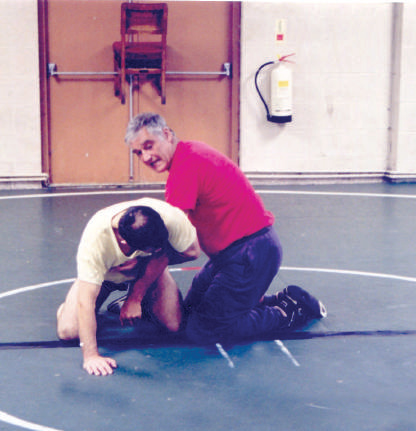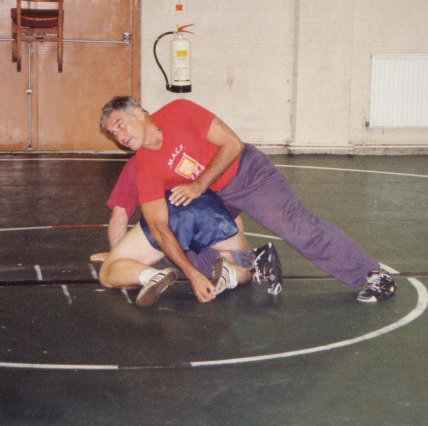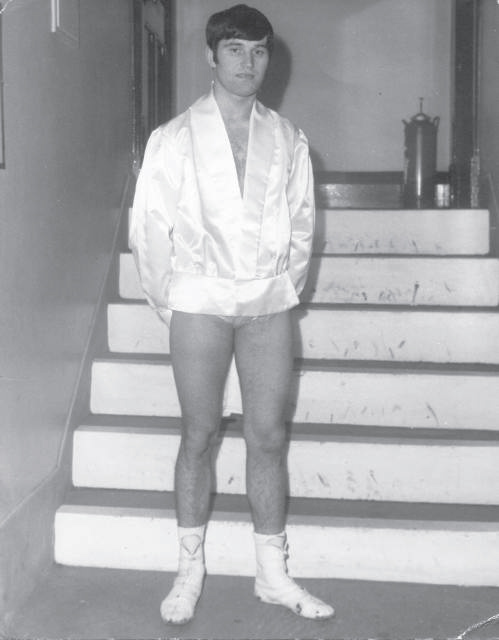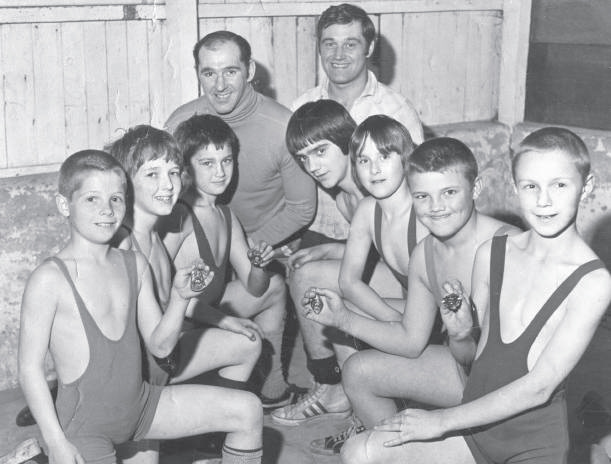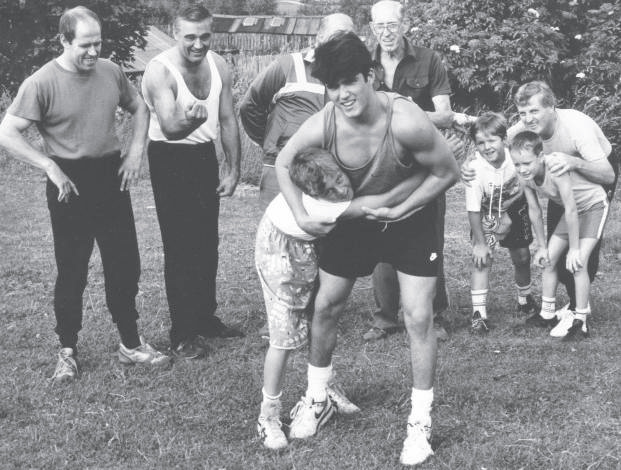
History
Wrestling is said to be as old as mankind but is something that can be seen even in the animal kingdom as we often see them playing games based on pinning their opponent. Almost every country had some form of wrestling sharing common features yet uniquely expressing the culture they developed in.

British Wrestling
Britain has a long history of wrestling with 8th century celtic carving showing wrestlers engaging in bouts. Roman commentators noted that it was too dangerous to wrestle the English natives due to their skill and brutality. The most famous historic styles were those from the west country, the Lakes, Ireland and Lancashire.
The Devonshire and Cornish styles are believed to have been brought over by the Normans in 1066. Wrestlers wear jackets and take holds similar to judo, with the winner being decided by who throws their opponent. The bone of contention between the Devonshire and Cornish styles was whether kicks and sweeps should be allowed, the Devonshire method allowing it the Cornish feeling ‘showing the toe’ was a dirty tactic.
King Henry VIII was a big fan of Cornish wrestling, once challenging France’s monarch King Francis to a bout which he subsequently lost.
Cumberland and Westmoreland wrestlers gripped their own hands, the winner either breaking the grip of their opponent or forcing some body part other than the feet to touch the ground. Irish ’Collar Tie’ wrestling has a long history going back to at least the 1600s, wrestlers began with a collar tie position and tried to throw each other.
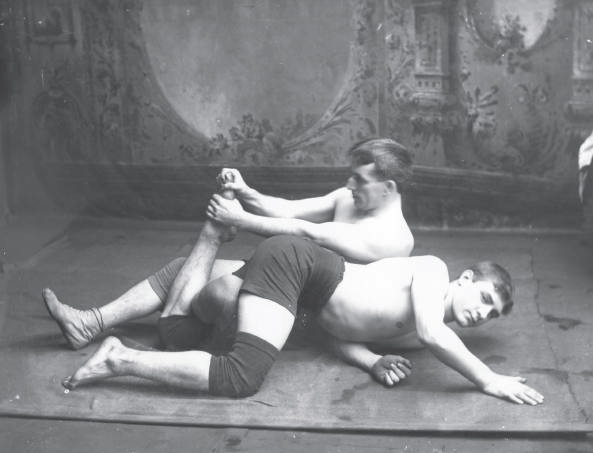
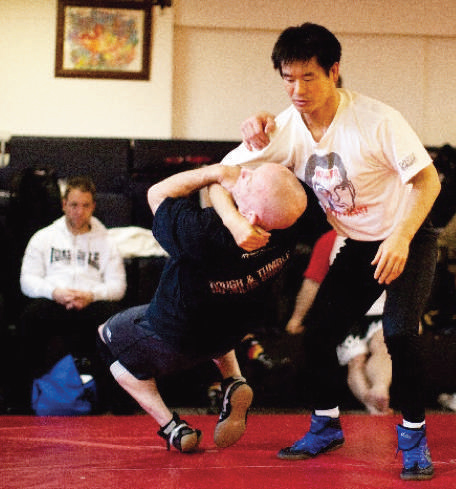
A Lancashire Heritage
Catch as Catch Can or Lancashire Wrestling has a long history. The name implies that unlike many traditional wrestling styles there is no set grip with exponents taking opportunities as they come this enables a wider variety of tactics and techniques. This would mean other wrestlers from the other British styles and those from further afield, many of whom came to Wigan looking for work, could compete within the Lancashire rules bringing their tactics and techniques with them. Bouts were also allowed to continue on the ground until a pin or submission was achieved, meaning Catch wrestlers developed the ability to continue wrestling on the ground.
In the 1800s sporting digest the Badminton Library described a Lancashire wrestling match as “..an ugly sight: the fierce animal passions of the men which mark the struggles of maddened bulls, or wild beasts, the savage yelling of their partisans, the wrangling, and finally the clog business which settles all disputes and knotty points, are simply appalling” Wigan was long known as the hot bed of wrestling, Catch being a popular sport amongst miners and working men. Matches often took places in fields with up to 10,000 spectators. The winner would be celebrated in the local pub whilst the loser, rumour has it, would be thrown into a nearby canal!
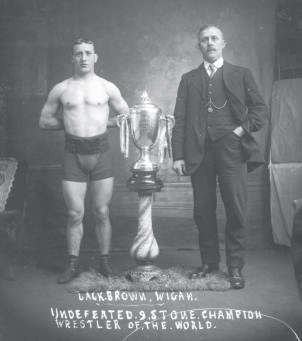
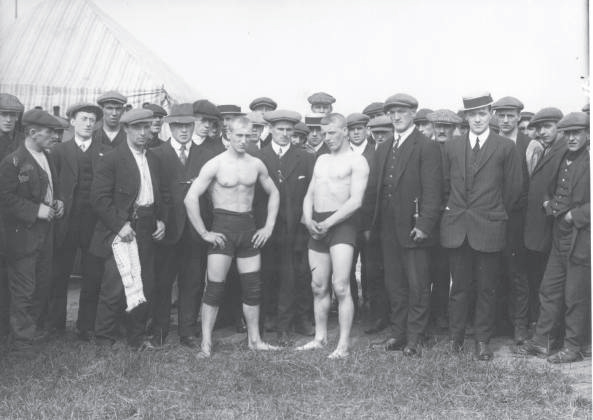
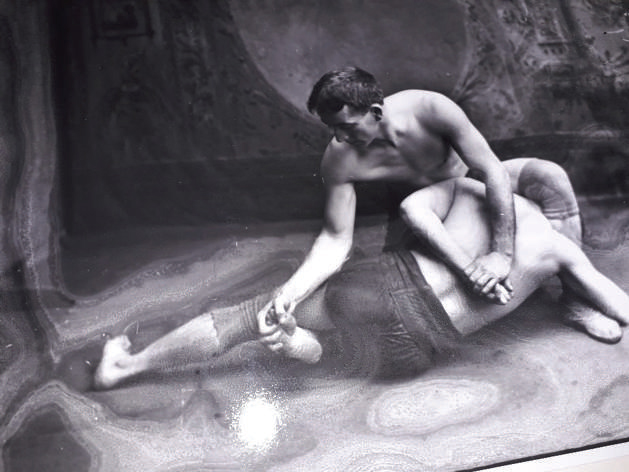
Rules Of Catch
Catch was a betting art with people waging on each man. This meant that the rules varied from bout to bout as agreed by the wrestlers and coaches. Whilst catch utilises many brutal moves and submissions. Catch wrestling was viewed as a gentleman’s art with certain moves and tactics being against the ‘unwritten’ rules. Grabbing individual fingers or striking may interfere with a man ability to work the next day and so were banned.
A wrestler may win a bout through a pin – forcing both the opponents shoulder blades onto the ground, or through a submission that forces the opponent to tap. Strangles are not allowed but throws, cross-faces, neck cranks and joint locks are part of the art.Traditionally there were no rounds or breaks and bouts continued until a pin or submission was obtained, sometimes for hours.
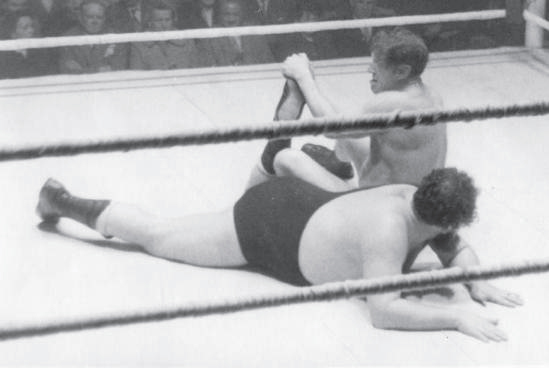

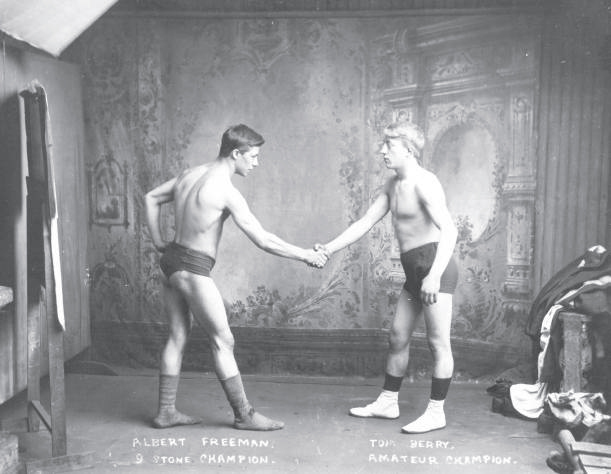
Billy Riley
Founder Of The Riley’s Gym - The Snake Pit
Born in 1896, Billy Riley came was one of five boys. When Billy was 2 years old his father left for America never to return. His mother was originally a school cleaner who then became the landlady of the White Bear Pub and the Crispin Arms, and Riley apprenticed to become a moulder by trade.
Billy Riley showed enthusiasm towards wrestling from a young age and started his professional wrestling career aged 14 with his mother often placing wagers on her son’s success. The young Riley fast developed a reputation for skill and tenacity. His skills being honed with coaching from Willie Charnock, Peter Burns and Finish Wrestler Waino Ketonen. He developed his skills through wrestling local miners in his hometown of Wigan. Riley won both the Welterweight and Middleweight championships in England. Later Riley would tour America and Africa demonstrating his wrestling skills. In the 1930s in Johannesburg he became the British Empire Middleweight Champion.
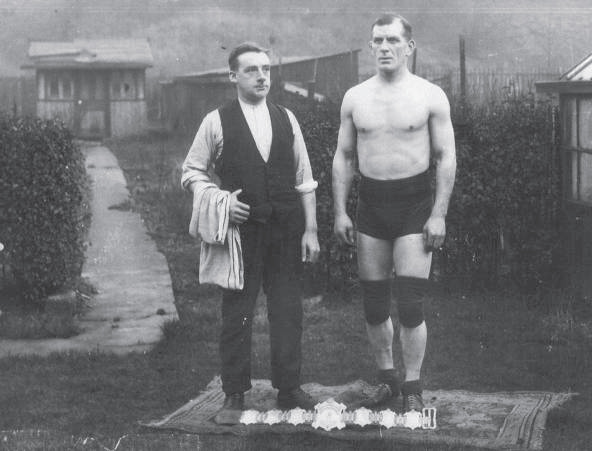
“Billy Riley is the best coach I’ve ever been around. He didn’t teach me just wrestling. He didn’t teach me only Catch-as-Catch-Can. He taught me how to learn.”
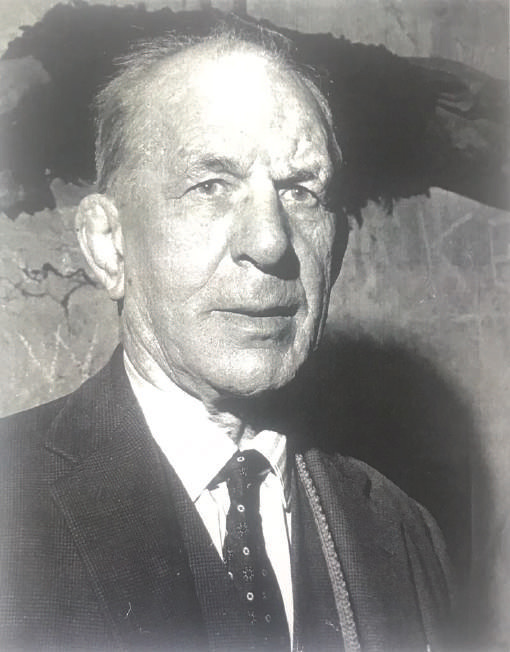
TRAINING AT RILEY’S GYM
Billy Riley had coached in the 1920s in America, he also coached in a number of locations around Wigan but later decided it would be better to have a space exclusively for wrestling.
In 1948 with the help of some of his wrestlers, Billy Riley bought a piece of land and built a gym that could also be referred to as a shed. This humble building was to become the home of many future champions and would create a legacy for the generations to come. This was a gym that could produce every type of wrestler. Wrestlers who could compete in Catch, Freestyle and professional / show wrestling. The latter allowed pit men to have a way out of mines by excelling in show wrestling and choosing this as an alternative career path. This included Bob Robinson, Allan Latham and many more. Riley said that there were no secrets to his method just being conscientious, working on a technique over and over until it was done right. He was a perfectionist. Never really making money from his coaching he said his reward was seeing a Wiganer wearing the Championship belt. Sessions were tough with each wrestle being treated like a challenge, new wrestlers would go from one painful hold to the next, learning how to lose being the first lesson. When asked how to get out of a hold Riley would often reply “Well how did you get into it?”. Riley’s lessons exemplified the spirit of Catch, his favourite hold being whichever one he could get on at the time.
Roy tells us how Riley also gave him advice beyond wrestling advising him to have and keep a trade (Roy followed in Billy’s footsteps and also became a moulder), not to waste the money he earned wrestling on posh meals, hotels or drink but instead to invest wisely and use an accountant.
The Japanese came to refer to Riley’s Gym as ‘The Snake Pit’, as they said upon attempting to throw a Wigan wrestler he would land on his front and attack you like a snake. The name stuck. After Billy Riley’s retirement from wrestling Roy Wood took over coaching and Billy returned to mentor him in this new role and continuing the gyms reputation for superb coaching and as the home of Catch as Catch Can wrestling.
Without a doubt this gym produced exceptional wrestlers. In the 1950’s it saw wrestlers such as Karel Istaz (Karl Gotch) and Bert Assirati. The 1960’s included Ernie Riley (Billy Riley’s son), Melvin Riss (Harold Winstanley), John Foley, Jack Dempsey (Tommy Moore), Billy Joyce (Bob Robinson) and Billy Robinson.Other great wrestlers included Roy Wood, Alan Latham (Francis Sullivan), Seamus Dunleavy, Michael Dunleavy, Billy Chambers, Len Wetherby, Jackie Cheers, Frank Riley, Jimmy Hart, Alan Hartwood, Harry Duvall, Ken Baldwin, John Naylor and Brian Burke.
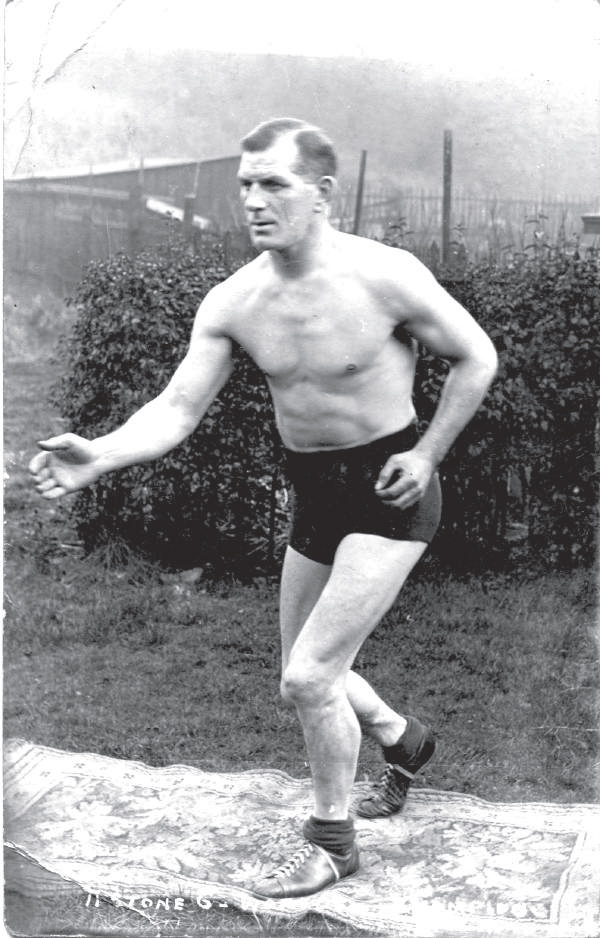
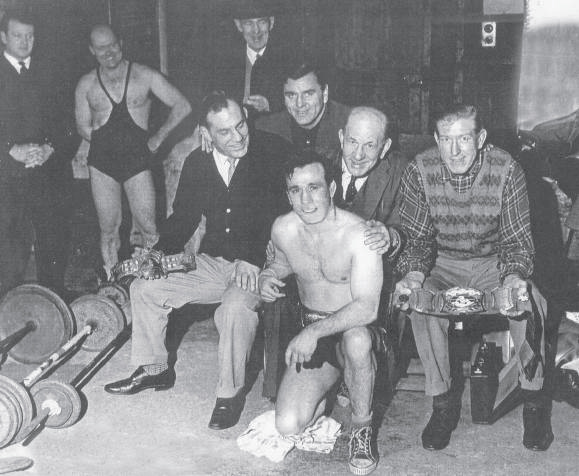
BOB ROBINSON (BILLY JOYCE)
MASTER OF CATCH
When the wrestlers who trained with Billy Riley are asked who they thought was the best wrestler one name always comes up – Bob Robinson who wrestled as Billy Joyce. Born in 1916, Bob worked with Roy’s father, Charlie. Bob was a haulage lad working under the supervision of Charlie on the coal face. He wanted to get a better life for himself and so began to learn wrestle.
Whilst he is remembered by those who knew him as a superb technical wrestler apparently its was not easy for him to learn wrestling. After work each day he would go to the gym and learn from Billy Riley or his brother Joe Robinson. Billy said that for 12 years “Bob was the dumbest guy we had in the gym”. Then, seemingly suddenly, the lessons sunk in and he ‘got it’. He began his professional career in 1944. Later he was to become the British Heavyweight Champion, with an open purse of £1,000 to anyone who could beat him.

Despite his skill he was a very humble man who did not like a fuss. He preferred spending time with his family, this alongside his serious no-nonsense approach to his wrestling bouts perhaps meant he was not as well-known as he should have been. Roy Wood says that when wrestling Bob, Bob would always be a step ahead, seemingly putting himself in poor positions only to have a clever counter already in place. Whenever Roy shows a move Bob Robinson did in class it always seems to be a surprising, unorthodox move that completely reverses the situation from a losing position into a dominant one.
Bob believed that wrestlers gain their skill through wrestling not through supplementary conditioning. If he came to coach and the athlete was using weights against his advice he would simply leave. Despite Bob’s wealth of knowledge, he had little patience for coaching. But Bob would still occasionally visit the Snake pit when Roy was coaching.
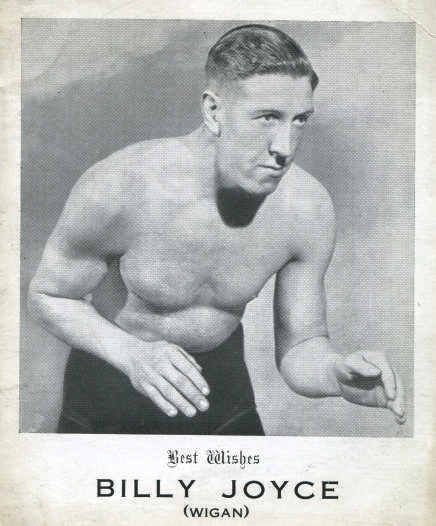
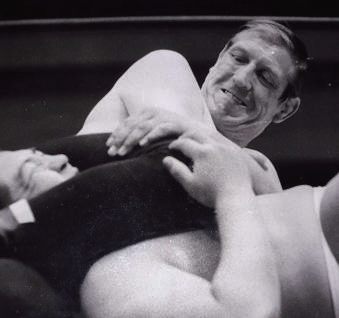
KARL GOTCH
INTERNATIONAL TORCHBEARER
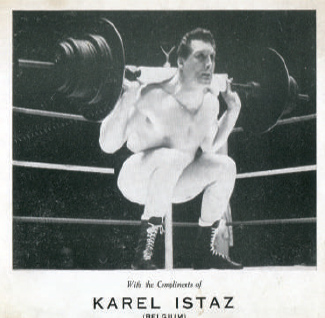
“Right in The Snake Pit was where I learned most of what I know today, from Billy Riley and his boys, and if I could take the time, I’d go back there right now, because there’s lots left to learn.”
Karl Gotch became famous in America and Japan not only as a wrestler but as a coach. A controversial figure known for being both driven and stubborn he nonetheless always gave credit to his time in Wigan being trained at Riley’s Gym for his high-level wrestling ability and his success.
Born in 1924 with the given name of Karel Charles Istaz, Karl Gotch wrestled from his youth becoming skilled. Accounts about his youthful career vary, but in the 1950s he left Germany to take part in professional wrestling in France. There a fellow wrestler mentioned that the famous Billy Riley was coaching out of a gym in Wigan, he further told him that the training was extremely hard and he was unlikely to stay long but he was welcome to try. Gotch quickly found out that his fellow wrestler was not lying about the strenuous nature of the training. Despite his being able to pin most wrestlers in Europe he found it a steep learning curve required to learn the holds and submissions in Catch as Catch Can. Gotch reiterated that Riley’s coaching was based on repeating techniques until they were perfected.
Karl practiced high repetitions of squats and Hindu push ups, believing if you were well enough conditioned nobody could beat you. Gotch was later to wrestle in Canada then America.
Gotch then went to Japan helping reinvigorate pro-wrestling not only as a wrestler but also as a coach. To say he had a good reputation would be an understatement as the Japanese referred to Gotch as the ‘God of wrestling’. His students were involved in the early formation of newer competitions such as the pancrase and the UFC being part of the reason for a resurgence of interest in the art.
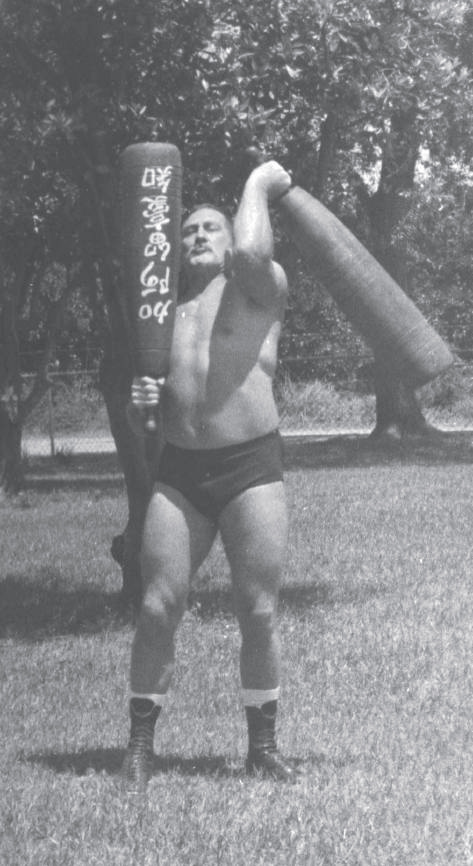
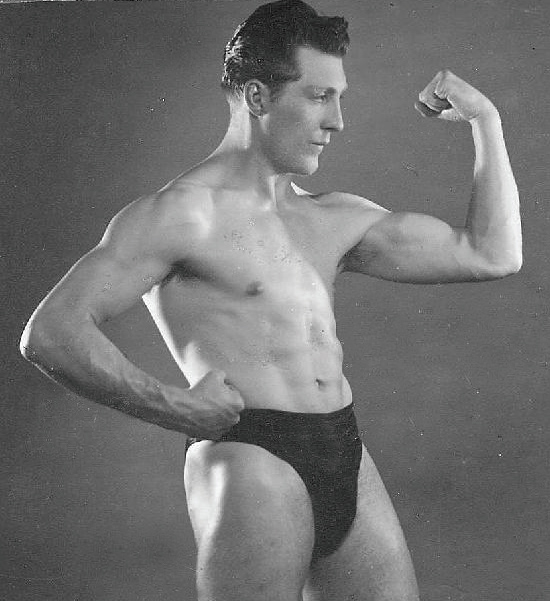
BILLY ROBINSON
SHOWMAN AND TECHNICIAN
“... my dad said “Look if you’re going to learn to wrestle, learn the best style that there is, the best form of combat fighting there is which is Catch as Catch Can wrestling. And the greatest gym in the world is in Wigan, run by a man called Billy Riley”
Coming from a family of boxers, Billy intended to maintain the tradition, but an eye injury prevented him from getting his boxing license. Billy was a big man, weighing 180bs at 14. He began learning amateur wrestling at the YMCA. He won the British National Wrestling Championship in 1957, and in 1958 he defeated a Olympic medal winner in the finals of light heavyweight European Open Wrestling Championship.
After he attained a good level of skill in amateur wrestling his father recommended he attend Riley’s Gym to learn from the ‘real’ wrestlers. His first visit was a wakeup call about how much he had yet to learn. Indeed, even after winning title or competitions the next time Robinson returned to Riley’s gym he would be put against a smaller man who would soundly beat him. Riley’s way of keeping his “mental conditioning”. Billy Robinson went on to travel the world demonstrating his superb wrestling skills. He was a popular wrestler making a name for himself in both Japan and the USA. Later in life he coached in both places, teaching a number of famous wrestlers and MMA fighters.
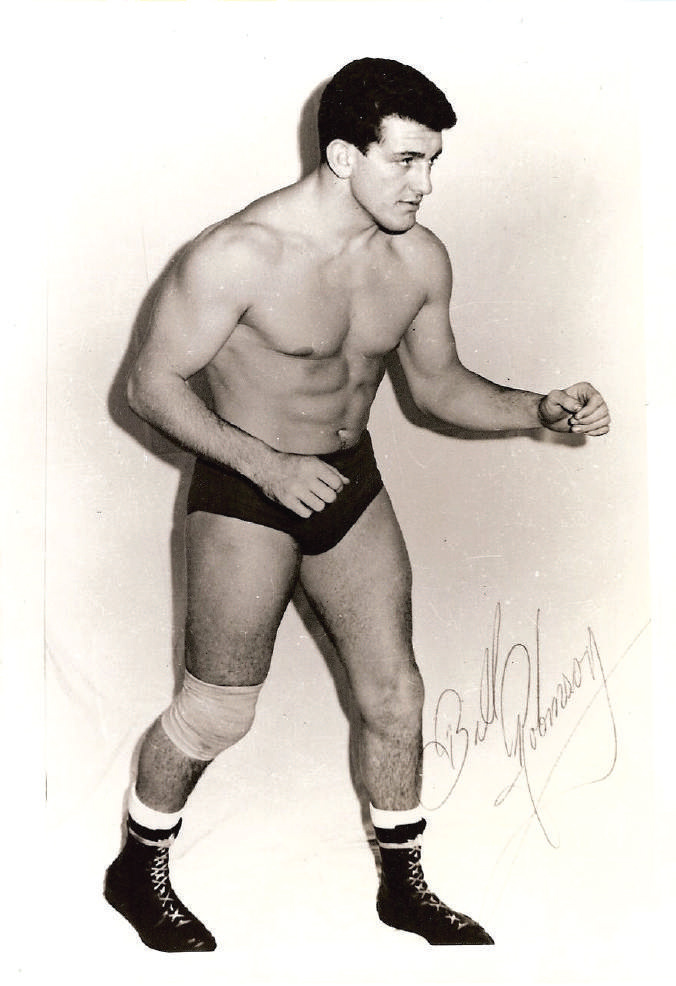
ROY WOOD
MAINTAINING THE LEGACY
Born in 1943, Roy Wood came from a family of pugilists, growing up with a boxing ring in the back garden. He became interested in wrestling and began attending Riley’s Gym aged 15. Initially he went to spectate but one day Billy Riley told him if he wanted to keep coming he would have to bring kit. Training was hard, with horse hair stuffed canvas on the floor. One day Roy asked Billy how he could stop cutting his knees on the floor, Billy replied that a good wrestler never puts his knees on the floor. Learning was hard, and Roy sometimes questioned why he did it, but he persisted training at Riley’s 3-4 times a week learning all the styles of wrestling until he could hold his own.
At 17 Roy went to the Matt Moran’s fairground booth to see if he could wrestle for him. Matt had enough wrestlers already, so Roy boxed for him instead. Roy had his first professional wrestling bout. Like Riley, Roy wood was a moulder by trade but after a full day’s work he would often travel to a venue and show wrestle in the evening. Billy told Roy “ You can’t eat medals. Earn professional and earn some money”. When Roy’s son Darren wanted to learn to wrestle, Roy returned to Riley’s gym only to find it in a dilapidated state. Alongside Tommy Heyes he rebuilt the gym coaching Darren with other youngsters. Billy Riley began to return to watch the training sessions, often offering Roy advice about coaching afterwards. Later, after Riley’s death, the land which the gym was on was sold so Roy moved the Snake Pit to its current location in Aspull.
As Roy Wood was teaching youngsters, he began to focus more on the freestyle wrestling ruleset. His approach proved successful with students competing and winning medals around the world. Roy has had students compete in the Commonwealth games and the Olympics and was the English Coach for the Commonwealth Games in Puna in 2008 and the was the Coach for Guam in 2018 in the London Olympics. Roy has played a significant part in introducing wrestling into professional rugby. Helping a number of rugby clubs including St Helens Rugby Club, improving the players tackling ability and helping them to the win the Challenge cup that year. Many of Roy’s students have gone on to have successful careers in wrestling, MMA and rugby, some going on to become skilful coaches themselves.
Later when in 1990 Mr Wakamatsu and Mr Sakurada came to Wigan wanting to learn more of the Wigan style which had, through Karl Gotch and Billy Robinsons demonstrations and coaching, inspired many in Japan they initially sought out Bob Robinson who recommended they seek out Roy Wood. Not long after Roy was on his way to Japan to coach. At the end of his visit Roy, aged 51, wrestled in front of 17,000 people in the Yokohama arena.
Due to the dominance of Japanese and American wrestlers with Catch training in Mixed Martial Arts and grappling competitions in the 2000s interest again began to grow in the original art of Catch as Catch Can wrestling. In 2011 Roy’s daughter Andrea persuaded him to keep the complete art alive. Roy began teaching Catch as Catch Can again, the style of wrestling he learnt from Billy Riley. Since then people from all over the world have attended to train in the traditional Catch style in monthly intensive seminars and the yearly week-long International Week. Riley’s gym is continuing to pass on the art of Catch wrestling to a new generation and maintainits legacy as the home of Catch as catch can, Lancashire’s great heritage style of wrestling at the Snake Pit.
